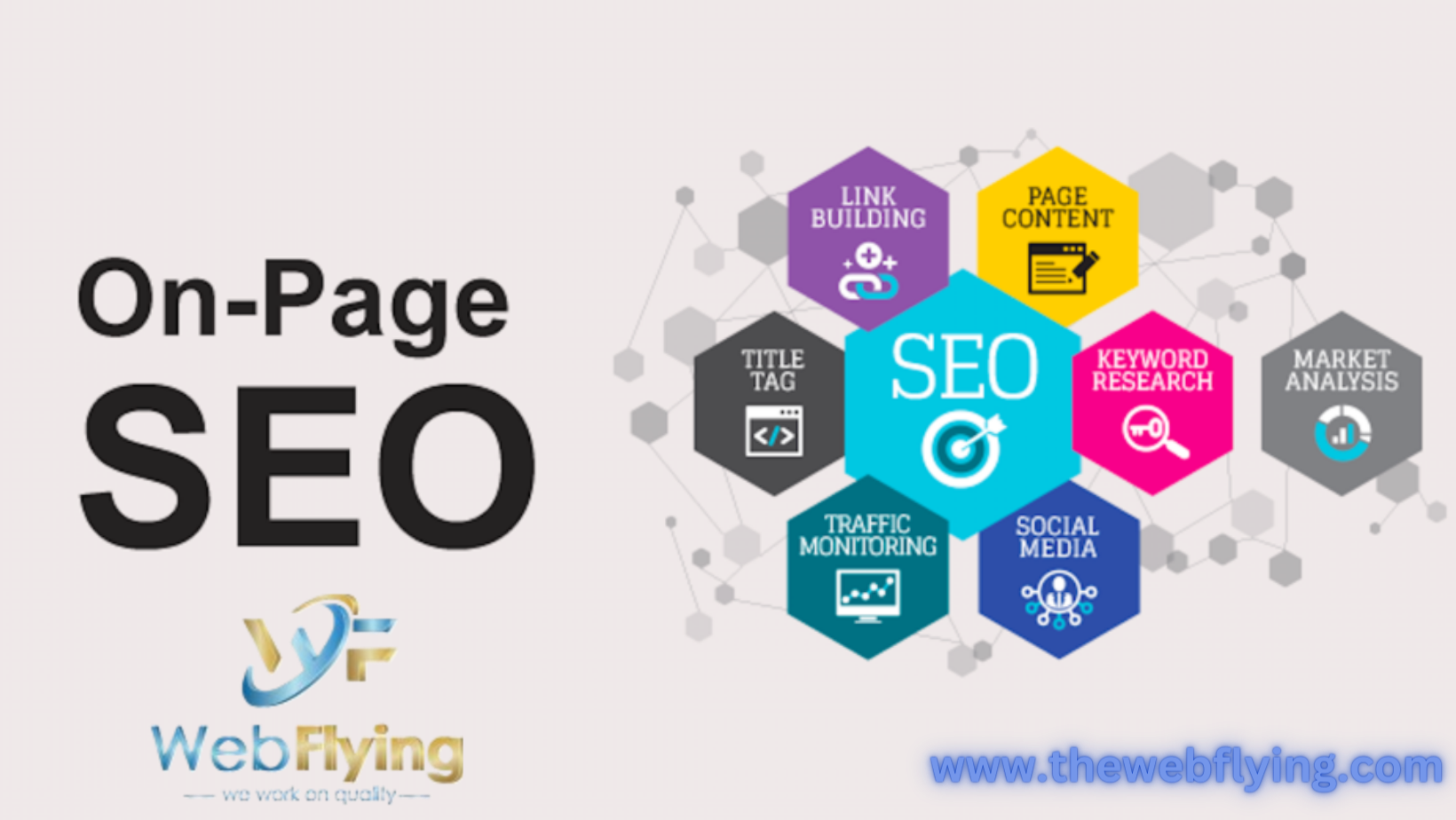On-page SEO refers to the practice of optimizing individual web pages to rank higher and attract more relevant traffic in search engine results. It involves various techniques and strategies aimed at improving a page’s visibility, relevance, and user experience.
Key Elements of On-Page SEO
- High-Quality Content: Content should be relevant, valuable, and engaging to your target audience. Use proper formatting, headings, and keywords naturally throughout the content.

2.Keyword Optimization: Research and target relevant keywords for each page. Include them in the page title, meta description, headings, and within the content itself. But avoid keyword stuffing.
3.Title Tag: Create unique, descriptive, and keyword-rich titles for each page. Keep them within 50-60 characters to ensure they display properly in search results.

4.Meta Description: Write compelling meta descriptions (around 150-160 characters) that accurately summarize the content and entice users to click through.
5.URL Structure: Use clean and descriptive URLs that include targeted keywords. Keep them concise and readable, avoiding unnecessary characters or parameters.
6.Header Tags: Use header tags (H1, H2, etc.) to structure your content logically and help search engines understand the hierarchy and relevance of different sections.

7.Image Optimization: Optimize images by using descriptive filenames, alt text, and captions. This helps improve accessibility and provides additional opportunities for keyword optimization.
8.Internal Linking: Link to relevant pages within your site to help search engines understand the context and hierarchy of your content. This also helps distribute link equity throughout your site.
9.Page Speed: Ensure your pages load quickly on all devices. Optimize images, minimize server response time, and leverage browser caching to improve overall page speed.

10.Mobile-Friendliness: Design your pages to be responsive and user-friendly on mobile devices. Google prioritizes mobile-friendly sites in its search results.
11.User Experience (UX): Provide a seamless and intuitive user experience with clear navigation, readable fonts, and engaging multimedia elements.

12.Structured Data Markup: Implement structured data markup (Schema.org) to provide search engines with additional context about your content, which can enhance rich snippets in search results.
13.Social Sharing: Encourage social sharing by including social media buttons and optimizing your content for sharing on various platforms.

14.Content Updates: Regularly update and refresh your content to keep it relevant and up-to-date. This shows search engines that your site is active and authoritative in your niche.
By focusing on these on-page SEO factors, you can improve your site’s visibility and rankings in search engine results pages (SERPs).


Thanks for the complete information. You helped me.
For more information about us please join our Whatsapp Channel https://www.whatsapp.com/channel/0029VaHtmV87j6gChG6zSg08
Your articles are extremely helpful to me. Please provide more information!
I can think of a few reasons that go along with this. With your permission…?
[…] What is on-Page SEO? […]
[…] What is on-Page SEO? […]
[…] On-Page SEO […]
[…] On-Page SEO […]
[…] On-Page SEO […]